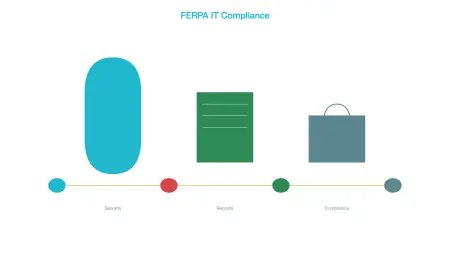Why Is Python So Popular in the Machine Learning Community?
Machine Learning,

Python has become the go-to programming language for machine learning (ML) enthusiasts, researchers, and professionals. Its meteoric rise in popularity isn’t just a trend—it’s a reflection of its practicality, versatility, and community support. If you’re wondering why Python dominates the ML landscape, this blog will break it down in a clear, easy-to-read way. Let’s dive into the reasons Python is the darling of the machine learning community.
1. Easy to Learn and Read
Python’s syntax is clean and straightforward, making it accessible to beginners and experts alike. Unlike languages like C++ or Java, which can feel intimidating with their complex syntax, Python reads almost like plain English. This simplicity is a game-changer for machine learning, where the focus should be on building models, not wrestling with code.
For example, a Python script to create a basic machine learning model using scikit-learn can be written in just a few lines. This ease of use means developers spend less time debugging syntax errors and more time experimenting with algorithms. For newcomers to ML, Python lowers the barrier to entry, allowing them to jump into building models without years of programming experience.
2. Rich Ecosystem of Libraries
Python’s extensive collection of libraries is a major reason it’s so popular in machine learning. These libraries are like pre-built toolkits, saving developers from coding complex algorithms from scratch. Here are some of the heavyweights:
-
NumPy: Handles numerical operations and large datasets with ease.
-
Pandas: Makes data manipulation and analysis a breeze.
-
Scikit-learn: Offers simple tools for building and testing ML models.
-
TensorFlow and PyTorch: Powerhouses for deep learning and neural networks.
-
Matplotlib and Seaborn: Help visualize data and model results.
These libraries are well-documented and constantly updated, making it easy to implement everything from basic linear regression to advanced neural networks. The availability of such robust tools means developers can focus on solving ML problems rather than reinventing the wheel.
3. Strong Community Support
Python’s massive community is a goldmine for machine learning practitioners. With millions of developers worldwide, you’re never alone when you hit a roadblock. Online platforms like Stack Overflow, GitHub, and Reddit are brimming with Python-related resources, tutorials, and forums where you can ask questions and get answers fast.
This community also contributes to the development of Python’s ML libraries. For instance, TensorFlow and PyTorch are open-source, meaning volunteers and experts constantly improve them. This collaborative spirit ensures Python stays cutting-edge in the fast-evolving world of machine learning.
4. Versatility Across Applications
Python isn’t just for machine learning—it’s a general-purpose language that excels in web development, automation, data analysis, and more. This versatility is a big win for ML practitioners who often need to integrate their models into larger systems, like web apps or data pipelines.
For example, a data scientist might use Python to clean data with Pandas, build a model with scikit-learn, and then deploy it in a web app using Flask or Django—all in the same language. This eliminates the need to switch between multiple languages, streamlining the workflow and reducing complexity.
5. Rapid Prototyping and Experimentation
Machine learning often involves trial and error—testing different models, tweaking parameters, and analyzing results. Python’s simplicity and extensive libraries make it ideal for rapid prototyping. You can quickly write a script, test a model, and visualize the results without getting bogged down in boilerplate code.
Jupyter Notebooks, a Python-based tool, further enhance this process. They allow developers to write code, visualize outputs, and document their work in an interactive environment. This is especially useful for ML researchers who need to share their experiments or iterate on ideas quickly.
6. Industry Adoption and Job Demand
Python’s dominance in machine learning isn’t just academic—it’s a favorite in the industry too. Companies like Google, Facebook, and Amazon use Python for their ML projects, which fuels its popularity. When big players adopt a language, it creates a ripple effect: more tutorials, more tools, and more job opportunities.
Speaking of jobs, Python skills are in high demand. A glance at job boards shows thousands of postings for data scientists and ML engineers who know Python. This industry backing gives learners confidence that investing time in Python will pay off professionally.
7. Support for Deep Learning
Deep learning, a subset of machine learning, has exploded in popularity thanks to advancements in neural networks. Python is the backbone of this field, largely due to libraries like TensorFlow and PyTorch. These frameworks make it easy to build, train, and deploy complex neural networks for tasks like image recognition, natural language processing, and more.
For instance, PyTorch’s dynamic computation graph allows developers to experiment with neural network architectures on the fly, which is a huge advantage for researchers. TensorFlow, meanwhile, is known for its scalability, making it ideal for production-level ML systems. Python’s ability to support both research and deployment makes it a top choice for deep learning.
8. Cross-Platform Compatibility
Python works seamlessly across Windows, macOS, and Linux, which is a big plus for machine learning developers who may work in diverse environments. Whether you’re training a model on a Linux server or prototyping on a MacBook, Python runs without a hitch. This cross-platform support ensures your code is portable and shareable, which is critical in collaborative ML projects.
9. Integration with Big Data Tools
Machine learning often involves working with massive datasets, and Python plays well with big data tools like Apache Spark and Hadoop. Libraries like PySpark allow data scientists to process huge amounts of data and then feed it directly into ML models. This integration is crucial for real-world applications, where datasets can be too large for a single machine to handle.
10. Continuous Evolution
Python is not a static language—it’s constantly evolving. The Python Software Foundation and its community ensure regular updates, adding new features and improving performance. For example, recent versions of Python have introduced faster execution and better memory management, which are critical for resource-intensive ML tasks.
Moreover, the ML community drives innovation in Python’s ecosystem. New libraries and tools are released regularly, keeping Python at the forefront of machine learning advancements. This continuous evolution means Python is well-equipped to handle future challenges in ML.
Conclusion
Python’s popularity in the machine learning community boils down to its simplicity, powerful libraries, and vibrant community. It’s a language that caters to both beginners and seasoned professionals, offering tools that make complex tasks manageable. Whether you’re building a simple regression model or a sophisticated neural network, Python has your back. Its versatility, industry adoption, and support for rapid prototyping make it the ideal choice for ML practitioners.
If you’re new to machine learning, Python is the perfect place to start. Its readability and vast resources will help you learn quickly, while its real-world applications ensure your skills stay relevant. For experienced developers, Python’s flexibility and ecosystem make it a powerful ally in tackling cutting-edge ML challenges. No wonder Python continues to reign supreme in the world of machine learning!
What's Your Reaction?
 Like
0
Like
0
 Dislike
0
Dislike
0
 Love
0
Love
0
 Funny
0
Funny
0
 Angry
0
Angry
0
 Sad
0
Sad
0
 Wow
0
Wow
0


















































